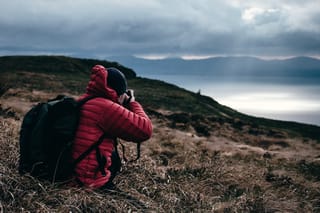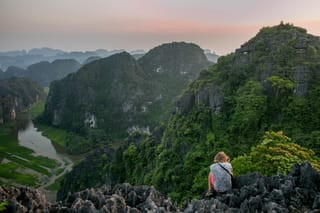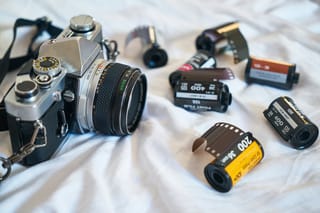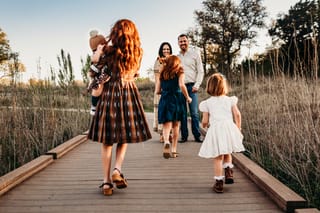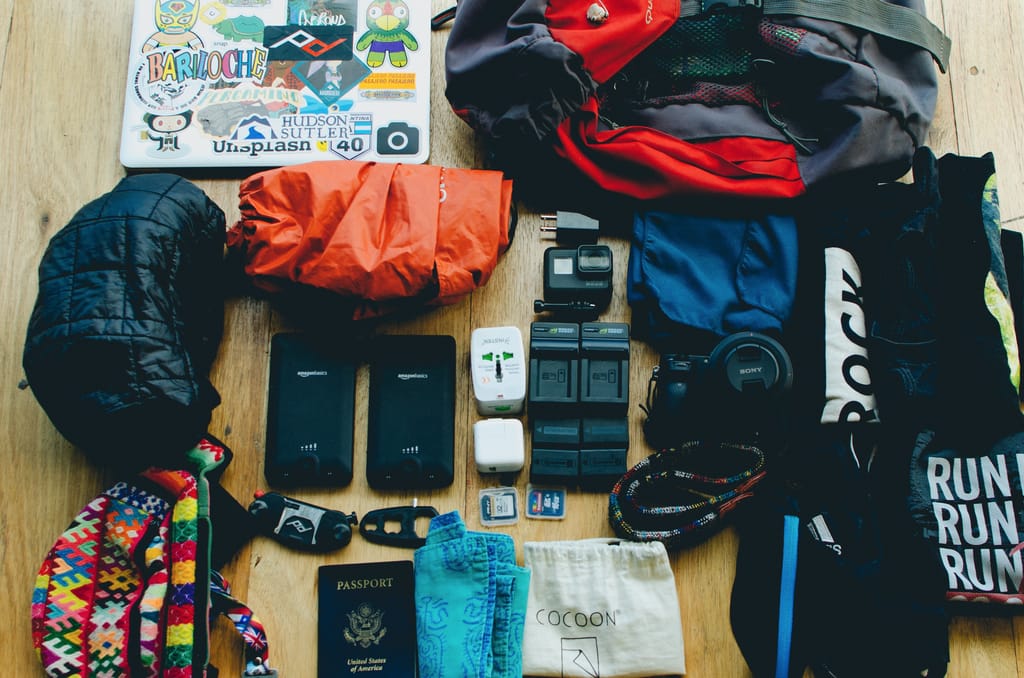
I went to Patagonia for 8 days and 7 nights with a 20L bag. My mission for the trip was to take photos and run the Patagonia Run (21k). I traveled from Bariloche to San Magil de los Andes and back again. I stayed in 4 different places between 3 towns and cities. Traveling light was great because I only had to worry about carrying a small backpack and nothing else. I had the luxury of having a car, so getting around was especially easy. In this article, I want to focus on what I brought with me and how it worked out. I hope that you can use some of these tips for your next travel photography trip.
Cameras and Electronics
- GoPro HERO5
- Sony a7 ii + Zeiss FE 55mm f/1.8
- MacBook Pro
- 2 External AmazonBasics 16,100 mAh power banks
- 4 Extra Sony batteries
- Power adapter (from US to Argentina)
- Peak Design CapturePRO
Clothes
- 3 T-shirts
- 3 pairs of socks
- 3 pairs of ExOfficio boxers
- 1 pair of running shorts
- 1 pair of mesh shorts
- Quick-dry towel
- Long-sleeve running shirt
- Semi-compressible jacket
- Running shoes
- The clothes I was wearing: jeans, a T-shirt and my hiking boots
Random / other
- Fanny pack
- Passport
- Running belt
- Cables for charging
- Travel lock
- Toothbrush
- Rain cover for backpack
- A few plastic bags
- Small canvas bag
- Pen
After returning, I realized that I had used just about every single item. I will admit that clothes were on the light side and I ended up re-wearing most clothes without doing laundry. When traveling, there are lots of options for laundry. Most hostels and hotels have laundry services and you can find laundromats easily if you’re in more of a major town or city. If you’re staying in a guesthouse, chances are they have laundry that you can take advantage of, too.

This Patagonia trip is a small trip within a larger trip. I already travel pretty light with the amount of camera gear that I own. I opted to leave behind my Rokinon 14mm and Sony 28-70mm in favor of keeping one lens on my camera. I love my 55mm and it’s a pleasure to shoot with. Most landscapes are perfectly fine with the 50mm-range and give you plenty of landscape detail in your shots. I regret not bringing my 14mm for dark sky night photography. The 55mm is great for night photography because it’s a 1.8 and super sharp, but it is not the easiest to focus with during a full moon. The 14mm is a manual and easy with which to find the perfect focus for the night sky. I also didn’t bring a tripod, so I had to improvise with finding props to get the perfect camera position.
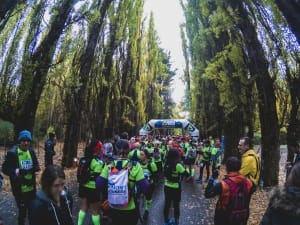
Because I was running a long trail run in colder weather, I wanted a few items to be prepared. I took my race day shirt and put it over my long sleeve running shirt for the race. I took my GoPro and stashed it in my running belt. My running shorts and running shoes were only for the race and not for the rest of the trip because I figured they’d get pretty dirty, and oh boy – were they dirty! The trail run had us running through plenty of mud and water. Luckily, the hostel I stayed had a heater with a rack that was perfect for drying wet shoes and socks. The plastic bags were used to seal off any dirt from the race clothes, to stay clean during the rest of the trip.
I wasn’t sure when I was going to have access to power to charge my devices. Because I only have one power adapter, I was limited in what I could charge and when. My laptop serves as an extra way to charge two additional USB things at once. The two power banks were great for charging my GoPro and cell phone during shorter 1-2-hour drives, to and back from hikes.
Two items that I feel shouldn’t be forgotten are a travel lock and a quick-dry towel. If you’re staying in a hostel, those two things go a long way. If you’re traveling with anything expensive, like cameras and computers, you want to make sure it’s locked up when you’re not near them. The lock can easily attach to your bag when you’re not using it to make sure it doesn’t get forgotten. Some hostels will provide you with a towel and other times you have to pay a small fee to rent one. Your travel towel also can act as a little bit of a privacy shield if you hang them from your dorm beds.
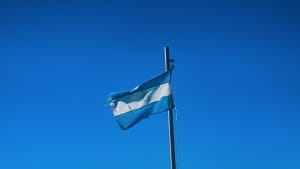
I exercised responsible data management and made sure that I backed up my photos from my card to my laptop after shooting for the day. Having a laptop certainly does add some weight and space with additional power cables. As an added bonus when traveling with a laptop and since my bag is fairly lightweight and flexible, the laptop adds a fair amount of back support.
I love my fanny pack. It’s something that I found to really come in handy when traveling on flights and buses. It’s a great way to keep your passport, a pen for those international custom documents or postcards, a phone and headphones close by. When walking around (if you don’t mind looking a little on the goofy side) it’s also a good place to keep money and any other personal belongings safe.
Luckily, I received a small tote bag from the Patagonia Run. This came in handy to stash away all of my other belongings when I used my bag during hikes. I can see how bringing a small collapsible bag would be nice to keep on hikes. During the hike, I used my capturePRO to keep my hands free by attaching my camera to my bag. The capturePRO is a nice way to keep your camera close by and not have it swinging around as you’re walking. The hikes I did were fairly simple, but the luxury of not holding onto the extra weight for a few hours was nice.
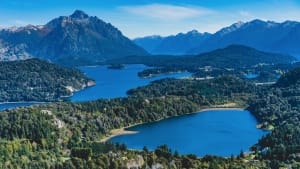
In conclusion, the trip was great. It’s low season in Patagonia, so most towns are quiet. There wasn’t a shortage of things to do or places to go. Having a car is a life-saver, and allows you to be on your own schedule and create more freedom for yourself. While this was one of my “less adventurous” trips, it was one of my favorites. See more photos and details about the week in Patagonia on exposure.

